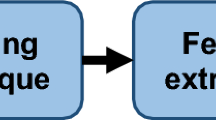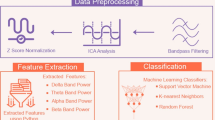Abstract
While the barn owl has been extensively used as a model for sound localization and temporal coding, less is known about the mechanisms at its sensory organ, the basilar papilla (homologous to the mammalian cochlea). In this paper, we characterize, for the first time in the avian system, the auditory nerve fiber responses to broadband noise using reverse correlation. We use the derived impulse responses to study the processing of sounds in the cochlea of the barn owl. We characterize the frequency tuning, phase, instantaneous frequency, and relationship to input level of impulse responses. We show that, even features as complex as the phase dependence on input level, can still be consistent with simple linear filtering. Where possible, we compare our results with mammalian data. We identify salient differences between the barn owl and mammals, e.g., a much smaller frequency glide slope and a bimodal impulse response for the barn owl, and discuss what they might indicate about cochlear mechanics. While important for research on the avian auditory system, the results from this paper also allow us to examine hypotheses put forward for the mammalian cochlea.














Similar content being viewed by others
References
Anderson DJ, Rose JE, Hind JE, Brugge JF (1971) Temporal position of discharges in single auditory nerve fibers within the cycle of a sine‐wave stimulus: frequency and intensity effects. J Acoust Soc Am 49:1131–1139. doi:10.1121/1.1912474
Carney LH (1993) A model for the responses of low-frequency auditory-nerve fibers in cat. J Acoust Soc Am 93:401
Carney LH, Yin TC (1988) Temporal coding of resonances by low-frequency auditory nerve fibers: single-fiber responses and a population model. J Neurophysiol 60:1653–1677
Carney LH, McDuffy MJ, Shekhter I (1999) Frequency glides in the impulse responses of auditory-nerve fibers. J Acoust Soc Am 105:2384
Carr C, Konishi M (1990) A circuit for detection of interaural time differences in the brain stem of the barn owl. J Neurosci 10:3227–3246
De Boer E, de Jongh HR (1978) On cochlear encoding: potentialities and limitations of the reverse-correlation technique. J Acoust Soc Am 63:115–135
De Boer E, Nuttall AL (1997) The mechanical waveform of the basilar membrane. I. Frequency modulations (“glides”) in impulse responses and cross-correlation functions. J Acoust Soc Am 101:3583–3592
Fischer BJ, Christianson GB, Peña JL (2008) Cross-correlation in the auditory coincidence detectors of owls. J Neurosci 28:8107–8115. doi:10.1523/JNEUROSCI.1969-08.2008
Fischer BJ, Steinberg LJ, Fontaine B et al (2011) Effect of instantaneous frequency glides on interaural time difference processing by auditory coincidence detectors. Proc Natl Acad Sci 108:18138–18143. doi:10.1073/pnas.1108921108
Fontaine B, Benichoux V, Joris PX, Brette R (2013) Predicting spike timing in highly synchronous auditory neurons at different sound levels. J Neurophysiol 110:1672–1688. doi:10.1152/jn.00051.2013
Fontaine B, MacLeod KM, Lubejko ST et al (2014) Emergence of band-pass filtering through adaptive spiking in the owl’s cochlear nucleus. J Neurophysiol 12:430–445. doi:10.1152/jn.00132.2014
Fuchs PA, Nagai T, Evans MG (1988) Electrical tuning in hair cells isolated from the chick cochlea. J Neurosci 8:2460–2467
Guinan JJ Jr (2012) How are inner hair cells stimulated? Evidence for multiple mechanical drives. Hear Res 292:35–50. doi:10.1016/j.heares.2012.08.005
Guinan JJ Jr, Cooper NP (2008) Medial olivocochlear efferent inhibition of basilar-membrane responses to clicks: evidence for two modes of cochlear mechanical excitation. J Acoust Soc Am 124:1080–1092. doi:10.1121/1.2949435
Gummer AW, Smolders JW, Klinke R (1987) Basilar membrane motion in the pigeon measured with the Mössbauer technique. Hear Res 29:63–92
Irino T, Patterson RD (2001) A compressive gammachirp auditory filter for both physiological and psychophysical data. J Acoust Soc Am 109:2008
Kijewski-Correa T, Kareem A (2006) Efficacy of Hilbert and wavelet transforms for time-frequency analysis. J Eng Mech 132:1037–1049
Köppl C (1997a) Frequency tuning and spontaneous activity in the auditory nerve and cochlear nucleus magnocellularis of the barn owl Tyto alba. J Neurophysiol 77:364–377
Köppl C (1997b) Phase locking to high frequencies in the auditory nerve and cochlear nucleus magnocellularis of the barn owl, Tyto alba. J Neurosci 17:3312–3321
Köppl C (1997c) Number and axon calibres of cochlear afferents in the barn owl. Aud Neurosci 3:313–334
Köppl C (2011) Birds—same thing, but different? Convergent evolution in the avian and mammalian auditory systems provides informative comparative models. Hear Res 273:65–71. doi:10.1016/j.heares.2010.03.095
Köppl C, Gleich O (2007) Evoked cochlear potentials in the barn owl. J Comp Physiol A Neuroethol Sens Neural Behav Physiol 193:601–612. doi:10.1007/s00359-007-0215-0
Köppl C, Gleich O, Manley GA (1993) An auditory fovea in the barn owl cochlea. J Comp Physiol A 171:695–704. doi:10.1007/BF00213066
Lewis ER, Henry KR, Yamada WM (2002) Tuning and timing in the gerbil ear: Wiener-kernel analysis. Hear Res 174:206–221
Lin T, Guinan JJ Jr (2004) Time-frequency analysis of auditory-nerve-fiber and basilar-membrane click responses reveal glide irregularities and non-characteristic-frequency skirts. J Acoust Soc Am 116:405–416
Manley GA, Gleich O, Leppelsack HJ, Oeckinghaus H (1985) Activity patterns of cochlear ganglion neurones in the starling. J Comp Physiol A Neuroethol Sens Neural Behav Physiol 157:161–181
Manley GA, Köppl C (1998) Phylogenetic development of the cochlea and its innervation. Curr Opin Neurobiol 8:468–474
Mc Laughlin M, Van de Sande B, van der Heijden M, Joris PX (2007) Comparison of bandwidths in the inferior colliculus and the auditory nerve. I. Measurement using a spectrally manipulated stimulus. J Neurophysiol 98:2566–2579. doi:10.1152/jn.00595.2007
Michelet P, Kovačić D, Joris PX (2012) Ongoing temporal coding of a stochastic stimulus as a function of intensity: time-intensity trading. J Neurosci 32:9517–9527. doi:10.1523/JNEUROSCI.0103-12.2012
Moller AR (1977) Frequency selectivity of single auditory-nerve fibers in response to broadband noise stimuli. J Acoust Soc Am 62:135–142. doi:10.1121/1.381495
Palmer A, Shackleton T (2009) Variation in the phase of response to lowfrequency pure tones in the guinea pig auditory nerve as functions of stimulus level and frequency. J Assoc Res Otolaryngol 10:233–250
Papoulis A (1977) Signal analysis. McGraw-Hill
Peña JL, Viete S, Albeck Y, Konishi M (1996) Tolerance to sound intensity of binaural coincidence detection in the nucleus laminaris of the owl. J Neurosci 16:7046–7054
Recio A, Rhode WS (2000) Basilar membrane responses to broadband stimuli. J Acoust Soc Am 108:2281–2298
Recio A, Rich NC, Narayan SS, Ruggero MA (1998) Basilar-membrane responses to clicks at the base of the chinchilla cochlea. J Acoust Soc Am 103:1972–1989
Recio-Spinoso A, Temchin AN, van Dijk P et al (2005) Wiener-kernel analysis of responses to noise of chinchilla auditory-nerve fibers. J Neurophysiol 93:3615–3634. doi:10.1152/jn.00882.2004
Recio-Spinoso A, Narayan S, Ruggero M (2009) Basilar membrane responses to noise at a basal site of the chinchilla cochlea: quasi-linear filtering. J Assoc Res Otolaryngol 10:471–484. doi:10.1007/s10162-009-0172-0
Rhode WS, Smith PH (1985) Characteristics of tone-pip response patterns in relationship to spontaneous rate in cat auditory nerve fibers. Hear Res 18:159–168. doi:10.1016/0378-5955(85)90008-5
Rossant C, Fontaine B, Goodman DFM (2013) Playdoh: a lightweight python library for distributed computing and optimisation. J Comput Sci 4:352–359. doi:10.1016/j.jocs.2011.06.002
Ruggero MA, Temchin AN (2007) Similarity of traveling-wave delays in the hearing organs of humans and other tetrapods. J Assoc Res Otolaryngol 8:153–166. doi:10.1007/s10162-007-0081-z
Schwartz O, Pillow JW, Rust NC, Simoncelli EP (2006) Spike-triggered neural characterization. J Vis. doi:10.1167/6.4.13
Shera CA (2001) Frequency glides in click responses of the basilar membrane and auditory nerve: their scaling behavior and origin in traveling-wave dispersion. J Acoust Soc Am 109:2023–2034
Shera CA, Guinan JJ Jr (2003) Stimulus-frequency-emission group delay: a test of coherent reflection filtering and a window on cochlear tuning. J Acoust Soc Am 113:2762–2772
Tan Q, Carney LH (2003) A phenomenological model for the responses of auditory-nerve fibers. II. Nonlinear tuning with a frequency glide. J Acoust Soc Am 114:2007
Tan X, Beurg M, Hackney C et al (2013) Electrical tuning and transduction in short hair cells of the chicken auditory papilla. J Neurophysiol 109:2007–2020. doi:10.1152/jn.01028.2012
Temchin AN, Recio-Spinoso A, van Dijk P, Ruggero MA (2005) Wiener kernels of chinchilla auditory-nerve fibers: verification using responses to tones, clicks, and noise and comparison with basilar-membrane vibrations. J Neurophysiol 93:3635–3648. doi:10.1152/jn.00885.2004
Temchin AN, Recio-Spinoso A, Ruggero MA (2011) Timing of cochlear responses inferred from frequency-threshold tuning curves of auditory-nerve fibers. Hear Res 272:178–186. doi:10.1016/j.heares.2010.10.002
Van der Heijden M, Joris PX (2003) Cochlear phase and amplitude retrieved from the auditory nerve at arbitrary frequencies. J Neurosci 23:9194–9198
Van der Heijden M, Joris PX (2006) Panoramic measurements of the apex of the cochlea. J Neurosci 26:11462–11473. doi:10.1523/JNEUROSCI.1882-06.2006
Versteegh CPC, Meenderink SWF, van der Heijden M (2011) Response characteristics in the apex of the gerbil cochlea studied through auditory nerve recordings. J Assoc Res Otolaryngol 12:301–316. doi:10.1007/s10162-010-0255-y
Viete S, Peña JL, Konishi M (1997) Effects of interaural intensity difference on the processing of interaural time difference in the owl’s nucleus laminaris. J Neurosci 17:1815–1824
Wagner H (2005) Microsecond precision of phase delay in the auditory system of the barn owl. J Neurophysiol 94:1655–1658. doi:10.1152/jn.01226.2004
Wagner H, Brill S, Kempter R, Carr CE (2009) Auditory responses in the barn owl’s nucleus laminaris to clicks: impulse response and signal analysis of neurophonic potential. J Neurophysiol 102:1227–1240. doi:10.1152/jn.00092.2009
Acknowledgments
Work supported by a European Community Marie Curie fellowship (PIOF-GA-2011-300753) for B.F., by the Deutsche Forschungsgemeinschaft (SFB/TRR31 “Active Hearing”) to CK, by the National Institute of Health (DC007690) to JLP. The authors would like to thanks B. Fischer for helping with the statistics.
Conflict of Interest
The authors declare that they have no conflict of interest.
Author information
Authors and Affiliations
Corresponding author
Rights and permissions
About this article
Cite this article
Fontaine, B., Köppl, C. & Peña, J.L. Reverse Correlation Analysis of Auditory-Nerve Fiber Responses to Broadband Noise in a Bird, the Barn Owl. JARO 16, 101–119 (2015). https://doi.org/10.1007/s10162-014-0494-4
Received:
Accepted:
Published:
Issue Date:
DOI: https://doi.org/10.1007/s10162-014-0494-4




